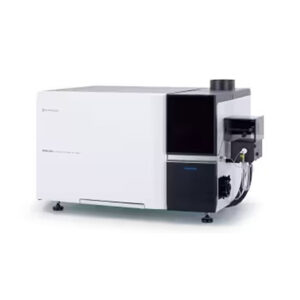Elemental analysis
Showing all 3 results
- Elemental analysis, Optical Instruments, Test Instruments, Testing Instrument & Equipment

Inductively Coupled Plasma Mass Spectrometry ICPMS-2040 Series / ICPMS-2050 Series – SHIMADZU CORPORATION
Elemental analysis, Optical Instruments, Test Instruments, Testing Instrument & EquipmentInductively Coupled Plasma Mass Spectrometry ICPMS-2040 Series / ICPMS-2050 Series – SHIMADZU CORPORATION
An Era Without Compromise
Shimadzu’s ICPMS-2040 Series / ICPMS-2050 Series of ICP Mass Spectrometers has achieved a harmonious blend of environmental-friendliness and analytical performance through its advanced proprietary Mini-Torch System. Without the need for any special options, it reduces measurement time, contributing to the optimization of your workflow efficiency. Moreover, the software comes with various functions, options, and maintenance information that minimize operator intervention, revolutionizing the way you work.
SKU: n/a - Elemental analysis, Optical Instruments, Test Instruments, Testing Instrument & Equipment

Multitype ICP Emission Spectrometers ICPE-9800 Series – SHIMADZU CORPORATION
Elemental analysis, Optical Instruments, Test Instruments, Testing Instrument & EquipmentMultitype ICP Emission Spectrometers ICPE-9800 Series – SHIMADZU CORPORATION
Best for all laboratories
Due to their high detection sensitivity down to ppb levels, ability to analyze a broad 5 to 6-digit range of concentrations, and ability to measure multiple elements simultaneously, ICP emission spectrometers are used in a broad range of fields, such as environmental testing, pharmaceuticals, foods, chemicals, and metals. ICPE-9800 Series of simultaneous ICP atomic emission spectrometers are next-generation systems that offer the superior accuracy necessary to simultaneously and quickly analyze multiple elements regardless of their concentration levels. They also feature user-friendly software that makes analysis easy. Furthermore, the systems reduce analysis costs while providing the highest performance levels in the industry. ICPE-9800 Series systems represent the ultimate in ICP atomic emission spectrometry for environmental, pharmaceutical, food, chemical, metal, and other fields.
SKU: n/a - Elemental analysis, Optical Instruments, Test Instruments, Testing Instrument & Equipment

Portable elemental analyzer MH-6000A – Micro Emission Ltd.
Elemental analysis, Optical Instruments, Test Instruments, Testing Instrument & EquipmentPortable elemental analyzer MH-6000A – Micro Emission Ltd.
Provides speedy elemental analysis of liquid samples in addition to being portable.
The adoption of liquid electrode plasma (patented in Japan and the United Stetes) makes plasma emission analysis easy to use and reliable. Analysis on inorganic components (metals, etc.) in liquid samples can be performed. Since it does not use gas such as argon, there is no need to construct gas cylinders, gas pipes, and exhaust ducts. It is advantageous in terms of running costs. It is easy to choose the installation location and ideal as an addition to existing facilities.
SKU: n/a
Are you looking for a Elemental analysis product?
1. Accuracy and Precision
Evaluate the accuracy and precision of the elemental analysis instrument. Look for instruments that provide reliable and precise measurements of elemental composition. Consider the instrument’s detection limits and ability to distinguish between different elements of interest.
2. Elemental Range
Consider the elemental range that the instrument can analyze. Ensure that it covers the specific elements you need to analyze in your application. It’s important to choose an instrument that can handle a wide range of elements, including both major and trace elements.
3. Analysis Technique
Evaluate the analysis technique employed by the elemental analysis instrument. Common techniques include atomic absorption spectroscopy (AAS), inductively coupled plasma optical emission spectroscopy (ICP-OES), and X-ray fluorescence (XRF). Understand the advantages and limitations of each technique and choose the one that best suits your analysis requirements.
4. Sample Compatibility
Assess the compatibility of the elemental analysis instrument with your sample types. Consider factors such as sample matrix, size, and preparation requirements. Ensure that the instrument can handle your sample forms, such as solids, liquids, or gases, without compromising the accuracy of the analysis.
5. Calibration and Standardization
Evaluate the calibration and standardization procedures of the elemental analysis instrument. Look for instruments that offer reliable calibration methods and certified reference materials for accurate calibration. Consider the ease of calibration and the availability of appropriate standards for your specific elemental analysis needs.